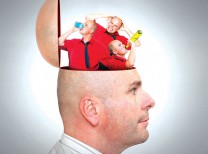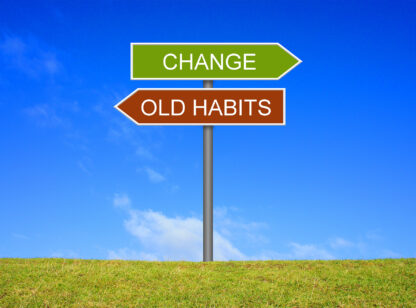In the Unites States, eating disorders are taking their toll emotionally and financially. It is estimated that 34% of adults and 17% of children are obese.1 And anorexia is estimated to be between 0.5% and 1.0% of the general population, with 95% of these being women.2 The incidence in men is increasing significantly.3
Ours is an unhealthy nation, too busy with video games, texting, television, and cell phones to focus on health and nutrition. Besides the emotional and financial impact, eating disorders lead to other problems, including disadvantages in employment and increased business costs.
Let’s face it, we live in a country where food is cheap. Our hectic lives set the stage for eating faster and in greater amounts. We have developed eating habits that increase the risk of many physical and mental conditions, such as clinical depression, diabetes, high blood pressure, and coronary heart disease.4
That we are desperately trying to deal with the epidemic is reflected in the expenditures on physical fitness programs and diet products (estimated to be between $40 and $100 billion annually).5 Yet, research shows that there are no easy answers. Eating disorders are considered to be addictions, with food as the “drug of choice.”6 These addictions are attributable to psychosocial determinants, eating habits, sedentary lifestyles, genetics, and medical and psychiatric illnesses that the affected individual is not equipped to handle on his or her own.
Recovery requires digging deeply into one’s past to identify the reasons for the addiction. Building confidence and self-esteem is essential to changing an individual’s negative body image or life in general. The treatment protocol should include modalities to build confidence, self-esteem, and particularly, mindfulness. Life coaching, yoga, and meditation are modalities that do so—modalities that encourage mindful eating, healthy eating, reducing the likelihood of eating too fast, and overeating.
With life coaching and a regular regimen of yoga and meditation, eating becomes a delightful, conscious experience. By learning how to eat mindfully:
- We become aware of what, how, and how much we eat.
- We begin to enjoy meals without guilt.
- We are able to stop eating before feeling stuffed and depressed.
- We are aware of the nutritional value of the food we eat.
- We exercise, not to get rid of weight, but to strengthen the mind and body.
The key is to develop a weight control program that includes uncovering and managing the reasons for the food addiction. Good nutrition, physical exercise, behavior modification, and development of mindful eating habits will enable the individual to maintain a healthy weight.
With the conventional treatment outlined above, life coaching, yoga, and meditation, the affected individual will be able to set and achieve goals to start building a happier, more productive, and healthier life.
Jaime Carlo-Casellas, Ph.D. is a Stress Management Specialist, a Certified Life Coach, a Registered Yoga Instructor, and founding director of the Stress Management & Prevention Clinic in Rancho Mirage. For more on Jaime Carlo-Casellas, visit www.stressprevention.org. His book, Chaos & Bliss–A Journey to Happiness, is available at Amazon.com.
Sources: 1) National Health and Nutrition Examination Survey (NHANES) 2003–2006 and 2007–2008. 2) Hudson JI, Hiripi E, Pope HG, Kessler RC. The prevalence and correlates of eating disorders in the National Comorbidity Survey Replication. Biol Psychiatry. 2007; 61:348-58. 3) USA Today BethAnne Black, HealthScoutNews. 4) NIH Publication No. 04–358, June 2008. 5) Cummings, Laura (5 February 2003). “The diet business: Banking on failure.” BBC News. Retrieved 25 February 2009. 6) Hollis, J: Fat is a Family Affair: How Food Obsessions Affect Relationships. Hazelden, Center City. MN. 2003.














































Comments (0)